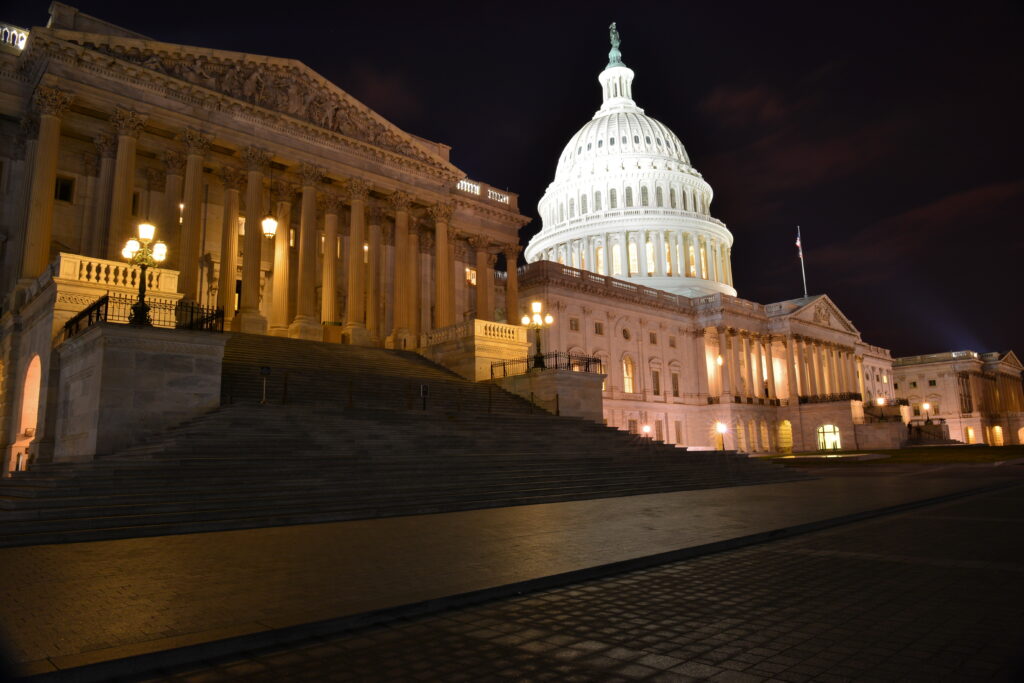
Goodbye Shutdown, Hello Funding
Well, it’s what we’ve all been waiting for… In a late-night move last Wednesday, Nov. 12, President Trump signed the Continuing Appropriations Act (CAA) of

Without congressional action, new therapy caps became effective Jan. 1, 2018.
Going into 2018, Medicare beneficiaries will have therapy benefits capped at $2,010 for physical therapy (PT) and speech-language pathology (SLP) combined, and the same limit for occupational therapy.
Congress recessed for the holiday break without addressing the expiration of the therapy cap exceptions process or acting upon a bipartisan agreement to permanently end the therapy cap.
What does this mean? There are a few important points to keep in mind as rumors and misinformation circulate on listserves and social media, and some information posted by the Centers for Medicare & Medicaid Services (CMS) on the advising beneficiaries that the therapy cap exceptions process is still in place. The facts as of Jan. 1, 2018 are the following:
• The therapy caps exceptions process ended Dec. 31, 2017.
• Medicare beneficiaries are limited to $2,010 of therapy under each therapy cap in 2018.
• Therapy over the cap is statutorily excluded as a Medicare benefit in the absence of an exceptions process.
• The therapy caps apply to all therapy service locations, with the exception of hospitals. The therapy caps do apply to critical access hospitals (CAHs).
• Beneficiaries are financially responsible for all therapy costs over the therapy cap (again, with the exception of services provided in hospitals).
• Providers should issue a mandatory advanced beneficiary notice of non-coverage (ABN) to advise beneficiaries of non-coverage of therapy over the cap.
Exceeding the $2,010 therapy cap is not likely for beneficiaries under a single therapy plan of care in January; however, for those receiving both PT and SLP services, the therapy cap may be reached more quickly. In some instances, it may be reached prior to the end of January and/or prior to Congress enacting a therapy cap resolution.
The financial limitation for 2018 was set forth in the Medicare Physician Fee Schedule Final Rule (CMS-1676-F). The Medicare Access and CHIP Reauthorization Act of 2015 (MACRA), which ended the sustainable growth rate, also extended the therapy caps exceptions process through December 2017. MACRA extended the therapy caps to hospitals, and on Dec. 31, 2017, that provision also ended with the expiration of the therapy caps exceptions process.
The U.S. House of Representatives and Senate had reached a bipartisan agreement to end the therapy cap, but again, it was not acted upon prior to the end of 2017. The proposed bipartisan agreement, when/if enacted, would permanently eliminate the therapy cap and institute a manual medical review process for therapy costing more than $3,000.
Representative organizations collectively called the “therapy cap coalition” have been advising their constituency groups that the first order of business for this new year is to continue their legislative efforts to permanently eliminate the therapy cap. This renewed effort for 2018 will mark the 21st year of the “Stop the Therapy Cap” campaign.
Background
The Balanced Budget Act of 1997 (BBA) established a $1,500 therapy cap on PT and SLP combined and $1500 on OT. Except for a few stops and starts, and a nine-year moratorium, the therapy cap was not permanently instituted until spring of 2006. The therapy cap initially applied to all Part B and outpatient therapy venues with the exception of hospitals. Hospitals were subject to the therapy cap beginning in 2012 during the extension of the exceptions process, and critical access hospitals were added in 2013.
With the 2006 initiation of the therapy caps Congress also implemented an exceptions process wherein medically necessary therapy was excepted from the therapy cap. The therapists were instructed to append the -KX modifier to claims lines exceeding the therapy cap, and in doing so created an attestation that documentation was in the record to support the medical necessity of therapy exceeding the cap. In 2006 the exceptions process included a manual process and an automated process.
Since 2007 the exceptions process is automated and based upon the treating therapist’s documentation of continued medical necessity, and not based upon an excepted list of diagnosis codes. The therapy caps were extended to hospitals in 2012, and to CAH in 2014.
There are several upcoming opportunities for Congress to act of the therapy caps as part of upcoming legislation including legislations to keep the government operating (due by Jan. 19), and extension of the CHIP reauthorization by March 31, 2018. In the interim the therapy community is awaiting guidance from CMS regarding the caps in particular, the issues of claims submission and retroactivity provisions for beneficiaries that were denied care, and reimbursement for beneficiaries paying privately to continue care under provisions of a signed ABN.
Next Steps for Providers
1. Tune in to Monitor Mondays on Jan. 15 for the latest therapy cap update. Not registered for Monday Mondays? No problem: sign up now at this link, and join me along with host Chuck Buck for the first broadcast of the year.
2. Sign up for my annual RACmonitor therapy update, “2018 Outpatient Therapy Rehab Updates: The Year of Living Dangerously” on Tuesday, Jan. 16 – with all the uncertainty surrounding outpatient therapy, this is a webcast you can’t afford to miss if you provide such services at your facility. You can sign up for this here.


Well, it’s what we’ve all been waiting for… In a late-night move last Wednesday, Nov. 12, President Trump signed the Continuing Appropriations Act (CAA) of

Medicare and Medicaid audits differ in process. Yet one thing remains the same, in practice: the administrative process has become so burdensome that many providers
Please log in to your account to comment on this article.

Accurately determining the principal diagnosis is critical for compliant billing, appropriate reimbursement, and valid quality reporting — yet it remains one of the most subjective and error-prone areas in inpatient coding. In this expert-led session, Cheryl Ericson, RN, MS, CCDS, CDIP, demystifies the complexities of principal diagnosis assignment, bridging the gap between coding rules and clinical reality. Learn how to strengthen your organization’s coding accuracy, reduce denials, and ensure your documentation supports true medical necessity.

Denials continue to delay reimbursement, increase administrative burden, and threaten financial stability across healthcare organizations. This essential webcast tackles the root causes—rising payer scrutiny, fragmented workflows, inconsistent documentation, and underused analytics—and offers proven, data-driven strategies to prevent and overturn denials. Attendees will gain practical tools to strengthen documentation and coding accuracy, engage clinicians effectively, and leverage predictive analytics and AI to identify risks before they impact revenue. Through real-world case examples and actionable guidance, this session empowers coding, CDI, and revenue cycle professionals to shift from reactive appeals to proactive denial prevention and revenue protection.

Sepsis remains one of the most frequently denied and contested diagnoses, creating costly revenue loss and compliance risks. In this webcast, Angela Comfort, DBA, MBA, RHIA, CDIP, CCS, CCS-P, provides practical, real-world strategies to align documentation with coding guidelines, reconcile Sepsis-2 and Sepsis-3 definitions, and apply compliant queries. You’ll learn how to identify and address documentation gaps, strengthen provider engagement, and defend diagnoses against payer scrutiny—equipping you to protect reimbursement, improve SOI/ROM capture, and reduce audit vulnerability in this high-risk area.

Only ICD10monitor delivers what you need: updates on must-know changes associated with the FY26 IPPS, including new ICD-10-CM/PCS codes, CCs/MCCs, and MS-DRGs, plus insights, analysis and answers to your questions from two of the country’s most respected subject matter experts.

Get clear, practical answers to Medicare’s most confusing regulations. Join Dr. Ronald Hirsch as he breaks down real-world compliance challenges and shares guidance your team can apply right away.

Federal auditors are zeroing in on Inpatient Rehabilitation Facility (IRF) and hospital rehab unit services, with OIG and CERT audits leading to millions in penalties—often due to documentation and administrative errors, not quality of care. Join compliance expert Michael Calahan, PA, MBA, to learn the five clinical “pillars” of IRF-PPS admissions, key documentation requirements, and real-life case lessons to help protect your revenue.

During this essential RACmonitor webcast Michael Calahan, PA, MBA Certified Compliance Officer, will clarify the rules, dispel common misconceptions, and equip you with practical strategies to code, document, and bill high-risk split/shared, incident-to & critical care E/M services with confidence. Don’t let audit risks or revenue losses catch your organization off guard — learn exactly what federal auditors are looking for and how to ensure your documentation and reporting stand up to scrutiny.

Learn how to navigate the proposed elimination of the Inpatient-Only list. Gain strategies to assess admission status, avoid denials, protect compliance, and address impacts across Medicare and non-Medicare payors. Essential insights for hospitals.
Happy National Doctor’s Day! Learn how to get a complimentary webcast on ‘Decoding Social Admissions’ as a token of our heartfelt appreciation! Click here to learn more →
CYBER WEEK IS HERE! Don’t miss your chance to get 20% off now until Dec. 2 with code CYBER24